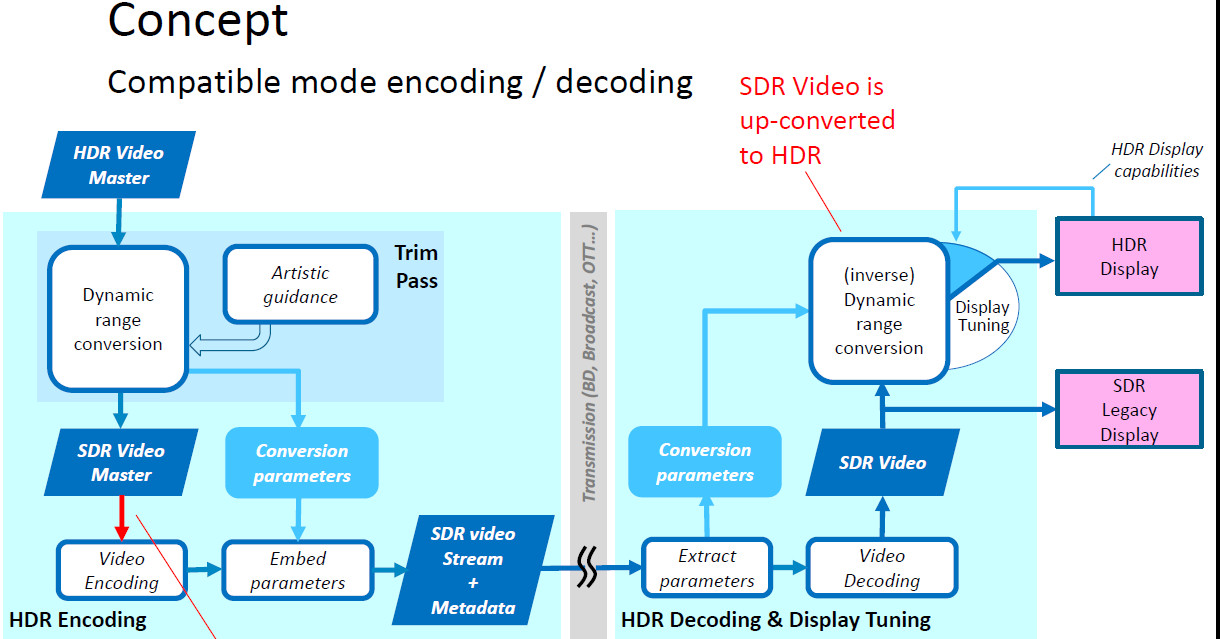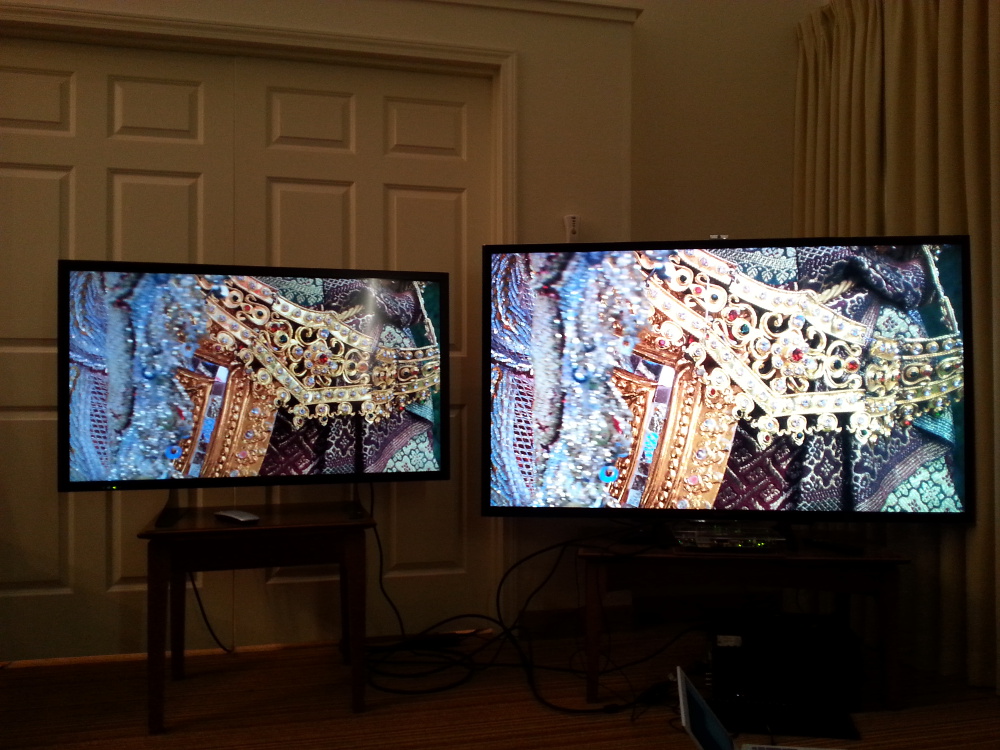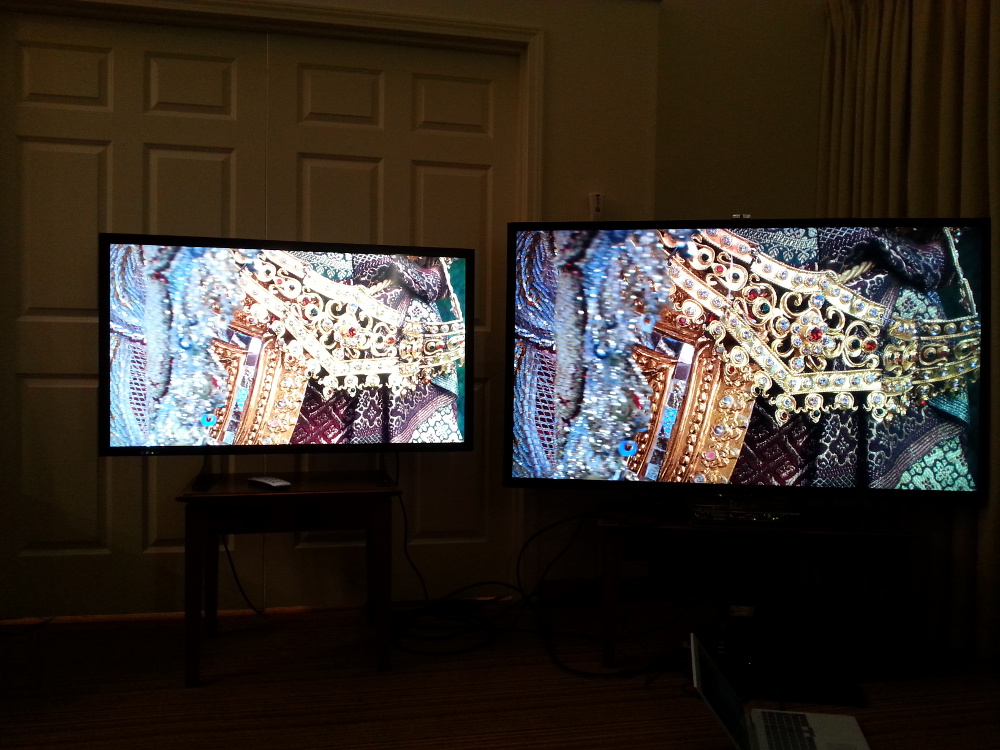At CES 2015, we had a chance to meet with Philips to discuss its activities in developing High Dynamic Range (HDR) solutions. It turns out, the company has been working on this for some time and is now very active in helping to standardize the approach and bring solutions to market.
Philips first dabbled in HDR starting in 2003, but 7 years ago it began a more serious effort. The company’s goal in developing a solution was to achieve high quality, reuse the existing distribution system, develop a useable and affordable workflow for HDR and be able to add HDR to a full range of products.
From a market point of view, Philips believes that there needs to be the ability for various players to develop their own version of HDR. Therefore, standardization efforts need to focus on the framework for delivering HDR content, but allow for different implementations within that.
Philips notes that Dolby has a fine solution with Dolby Vision HDR, but this is a comprehensive solution with licensing fees that will not appeal to all players in the market. As a result, Philips thinks this will play well with brands that don’t have the resources to develop their own HDR solution, but not so well with brands that have IP and a desire to have a differentiated HDR solution.
Like Dolby, Philips believes that it is best to do the HDR color grading first and then create derivative versions. However,in its approach it is critical to create both an HDR master as well as a Standard Dynamic Range (SDR) master. The SDR master is created from the HDR master in a “Trim pass” session which uses the Philips-developed tone-mapping algorithms along with artistic input from the colorist. The colorist must create the Rec. 709 SDR master if the HDR master is in the 2020 color space, for example.
Philips’ concept for HDR/SDR master, encoding, transport, decoding and display
On a log scale, the tone-mapping algorithm used by Philips is linear in the low luminance ranges but non linear as the light levels increase. Decisions need to be made how to map luminance levels that will exceed the capabilities of an SDR grade, for example. Plus, a colorist is needed to change the saturation for different brightness ranges and components. Today, Philips thinks that more than 50% of the content needs to be manually adjusted but it hopes this can be reduced to 20% over the coming years.
Philips has developed some tools that can now be plugged into color grading platforms such as Filmlight, DaVinci Resolve and others. The first to integrate the open FX plug-in is Digital Vision, Philips told us in the meeting.
In the process of creating the SDR master, metadata is saved that describes how to turn an HDR master into an SDR master. These parameters are added to the MPEG stream, which includes the encoded HDR version of the content. AVC, HEVC or other standard encoding processing can be used.
At the receive end, the metedata is separated from the encoded HDR video. The video is decoded to baseband and sent to a transform chip set. This is similar to the Dolby approach in that the “mapping” of the HDR content to the capabilities of the display is performed here. If it is an HDR display that matches the mastering HDR display, nothing is done. If it is an HDR display with lower peak luminance, black levels etc., a modified video signal is produced using the metadata to aid in the process. The metadata can also be used to create SDR versions for legacy displays. This is similar to what Dolby is proposing except that every TV maker is now free to develop their own transform and optimize as they see fit.
Philips says the metadata is not that big as it describes more global changes to the scene, not pixel by pixel changes. This means that Philips can propose a single layer encoding approach to delivering HDR content to the home. Both Dolby and Technicolor approaches feature a dual layer approach with a base layer (containing the SDR grade) and an enhancement layer (to create the HDR grade).
Alternatively, Philips is proposing an SDR compatibility mode where it is the SDR version plus metadata that is transmitted rather than the HDR version plus metadata. Now the metadata is the inverse of the previous metadata as it is used to create the HRD version from the SDR version when an HDR “aware” display is at the receive end.
 SDR Capatibility Mode
SDR Capatibility Mode
Philips noted that the new Blu-ray specification will include the option to have an HDR and or SDR grade placed on the disc.
To back up its development efforts, Philips also showed an impressive demo in its site at the Marriott Residence Inn. Two displays were set up side by side. On the left was the SIM2 monitor developed a number of years ago that can display a peak luminance of 4000 nits. On the right was a commercial Sony TV from last year that has a peak luminance of 1000 nits (yes this is available today). Philips worked with Sony to be sure all of the internal processing was turned off for the demo.
In the first photo, the SIM2 display is set as an SDR monitor and the Sony set run as an HDR display. Both were fed the same SDR grade with an external FPGA attached to the Sony set doing the HDR conversion. This is the comparison most often seen and the higher brightness of the Sony HDR image is readily apparent in the photo.
The second photo changes the input to the SIM2 display. Now, it is fed the full 4000 nits grade and compared to the Sony set with a peak luminance of 1000 nits. The increased brightness of the SIM2 set is now apparent (it also caused my camera to automatically switch from a 1/30 second exposure at ISO 125 to a 1/17 second exposure time and ISO 100, but still over exposed the brighter areas of the SIM2 display).
This image of some jewels was particularly effective as they really sparkled at 1000 nits but were just stunning at 4000 nits.



